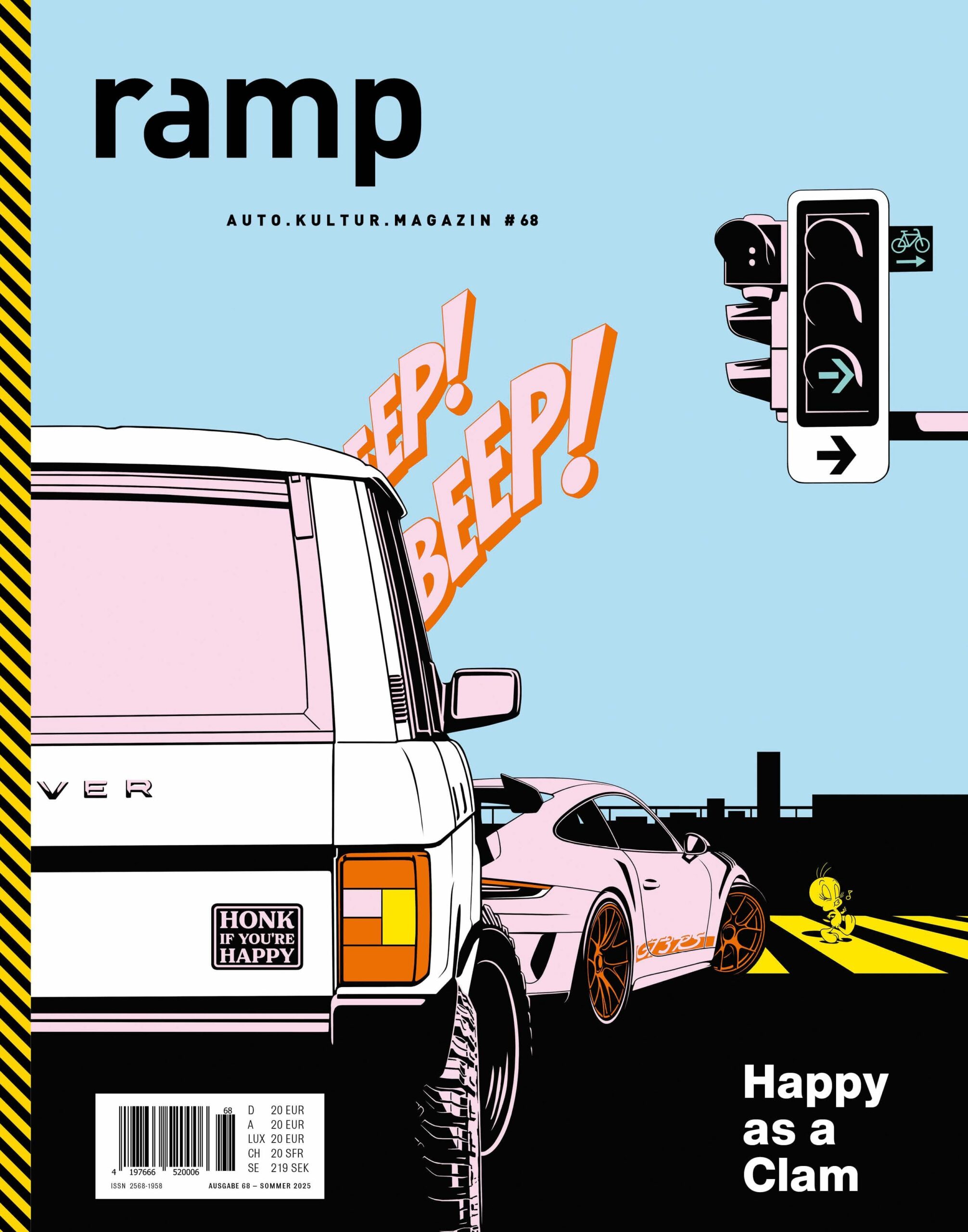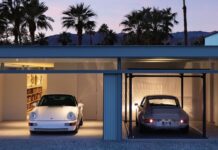The Vision V concept offers a glimpse into the future of luxury vans from Mercedes-Benz. An on-site visit to a world of open-ended possibilities.
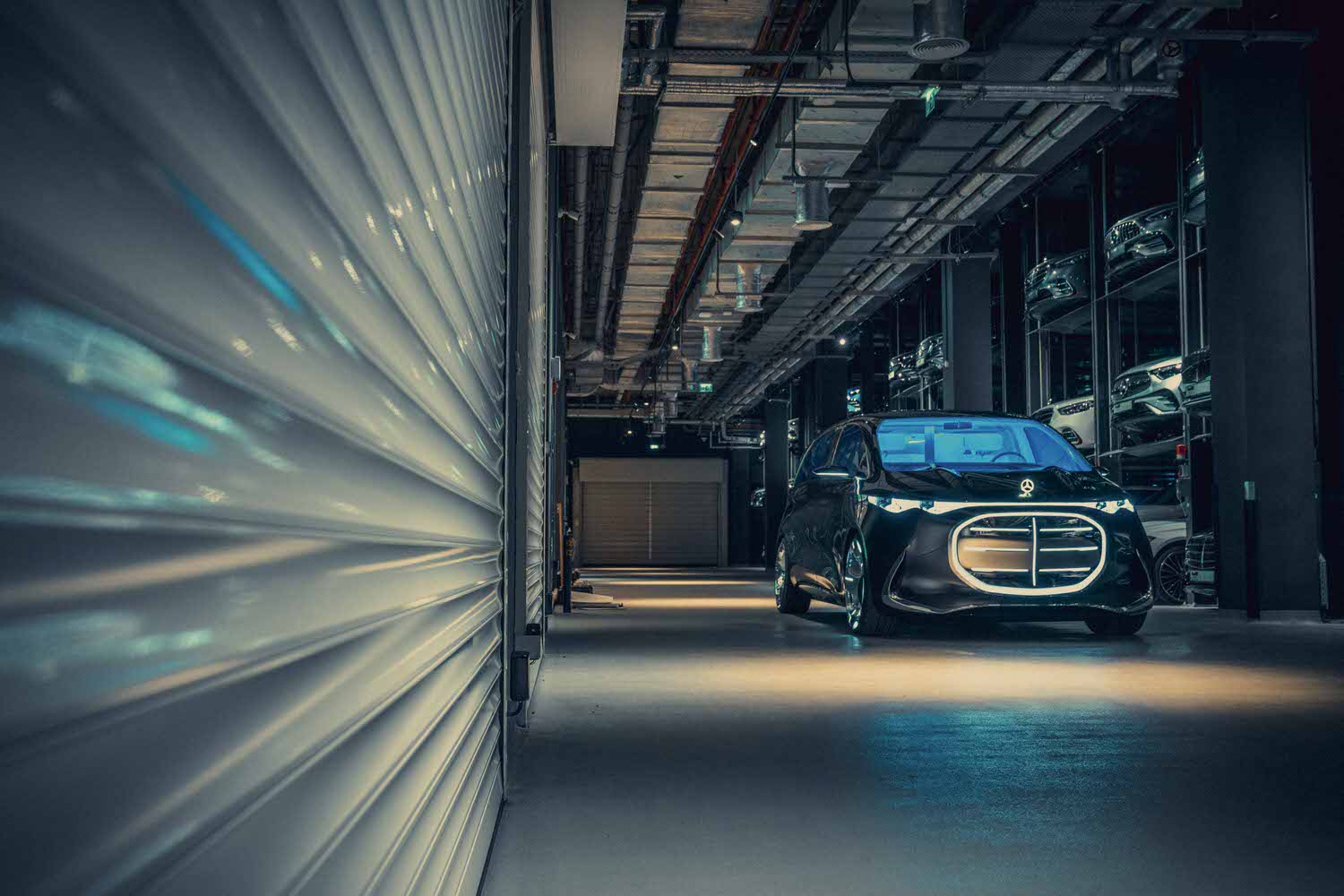
You can’t just buy a concept car and head off on vacation with it. You can only look at it – at least to the extent that the storytelling, imagery and layout of this article allow. But how – if at all – does the space inside a concept car, with its adjustable lounge seating and 65-inch flat screen that rises up from the floor, become something of its own? A cohesive whole, something greater than the sum of its parts?
The French sociologist, historian and philosopher Michel de Certeau took up this question – albeit not in reference to cars, but to space in general – in his 1980 work The Practice of Everyday Life. In his view, space comes into being through the movements that unfold within it, through the interplay of its elements. Seen in this light, the space inside a concept car should not be viewed as a static object, but rather as something shaped by the “totality of movements” that take place inside it – which then condenses into a temporary “constellation of fixed points”.
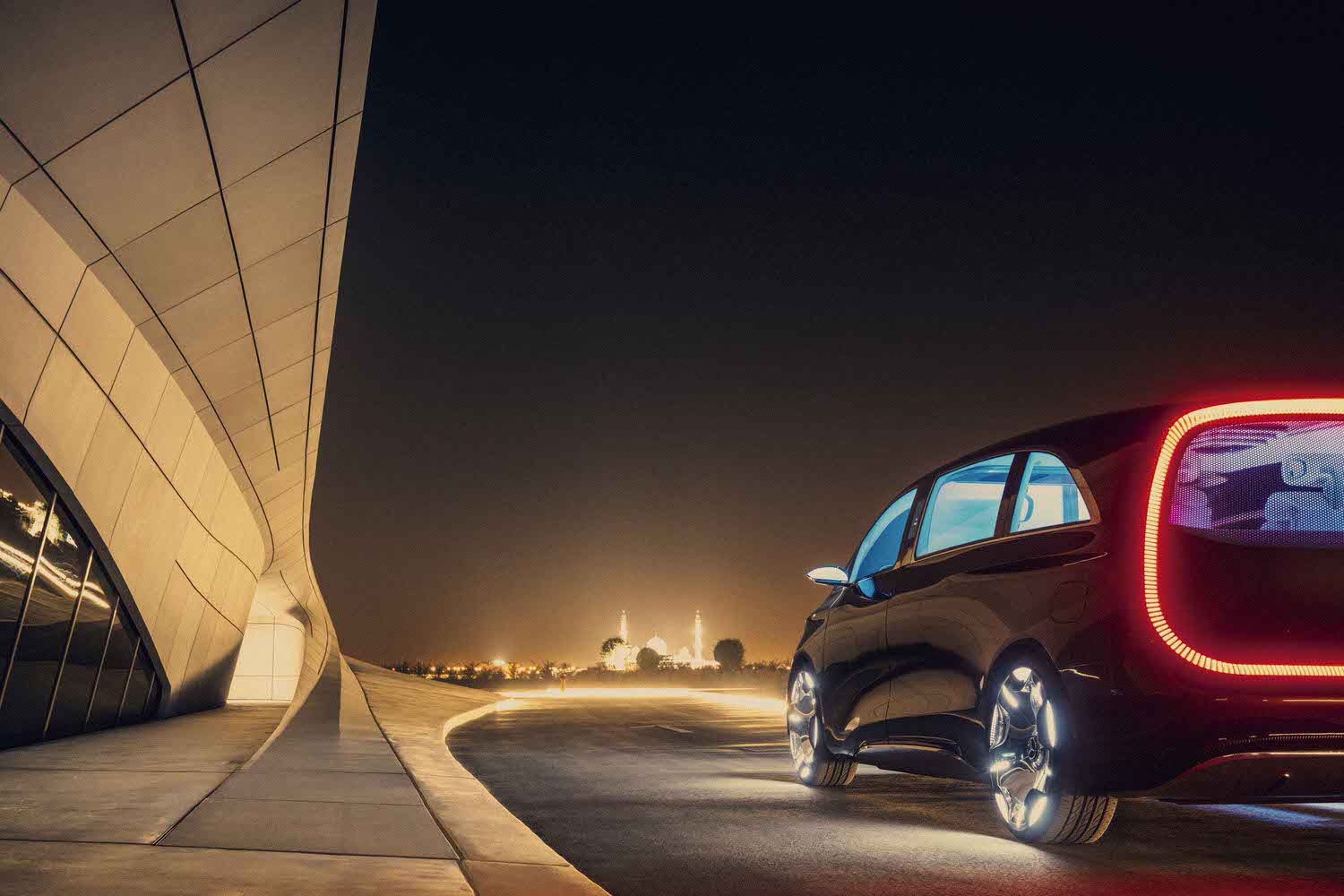
But first things first: the name of the concept car pictured here against the backdrop of Dubai won’t be much help in figuring all that out. “Mercedes-Benz Vision V” is unlikely to go down in history as a creative blueprint for future naming conventions. On the other hand, it’s surprisingly accurate in capturing the essence of what this is all about. Because:
- Space as a construct – not a container
A concept car like the Vision V is no longer just a receptacle for technology, but a narrative built from space. Following de Certeau, one might say: the space of the Vision V is not derived from architecture, but from practice – from use, imagination, interpretation. It is, in de Certeau’s words, a “practiced place”, a dynamic system of events, images, movements. What unfolds here is not a static arrangement of volumes, but an aesthetic construction of meaning.

Here, spatial theory intersects with ideas from literary and architectural space: flatness as a strength. That’s also true of the Vision V. The large screens, the clearly separated surfaces and the deliberate interplay of transparency and layering don’t add depth to the space – they make it legible. Space as text, not as a stage.
- Architectural, image and film space – and their displacements
Take it a step further and bring in film theory, and you can, with inspiration from Éric Rohmer’s dissertation on Murnau’s Faust, break the Vision V down into three spatial layers:
Architectural space: The physical interior with its organically flowing forms, lounge-style seats, retractable surfaces and richly haptic materials. A built reality featuring an armrest that folds out into a game board or glass panels that darken at the touch of a button.
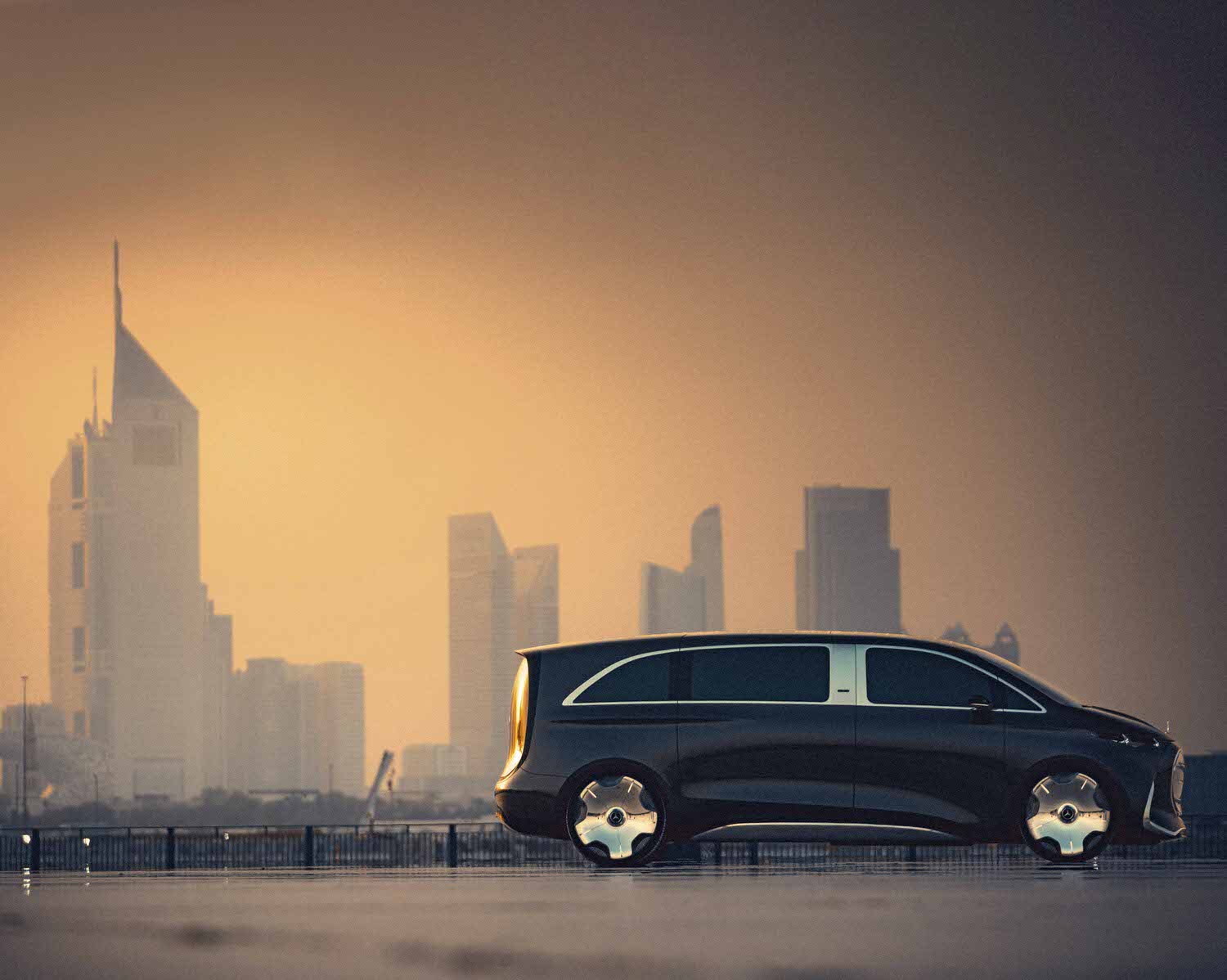
Image space: Meaning the imagery and its presentation through screens – primarily the 65-inch display that rises up from the floor to show maps, routes, audiovisual moods and graphics. Or you fire up the PlayStation and race a few laps. The narrow screens on the backs of the seats that simulate views of the inside or outside worlds also belong to this category.

Film space: The fusion of image, sound and surroundings creates a mental space inside the occupants’ minds – a fictional, imagined realm of experience. The journey becomes a narrative. The route, a scene. Storytelling happens inside the mind as you take in the space.
- Monstration vs. narration – the Vision V as text
A concept car like the Vision V stages itself. Doors open in slow motion, light glides across the inner surfaces as modulated soundscapes paint a picture. In the terminology of Canadian film scholar André Gaudreault, the Vision V shifts between monstration – the act of showing – and narration – the act of telling.
When the screen silently retracts into the floor, that’s a gesture that doesn’t narrate but simply monstrates itself. In contrast, the depiction of a route as a meditative soundscape on that same screen becomes a form of narration – a transfer of information about an imagined world, organized according to the principle of a syuzhet, the narrative structuring of events, as described by American film theorist David Bordwell.

- Space as a semiotic structure
You could argue that film is a language – or at the very least, functions like one. And that’s exactly the kind of thinking that applies to the Vision V. It, too, is structured like a text. Its semiotic units – light, sound, materials, motion, graphics – are semantic building blocks that generate meaning when they interact.
A prime example is the interface that changes in color and content. Meaning is not located in the individual component, but in how it relates to the others.
- Cinema of attractions – on four wheels
The Vision V is both spectacle and structure. It’s a showpiece, a stunner, a revelation. Just like in film. That’s the Vision V as it opens up, as the lighting dances across its exterior, as the seats morph into sculptural objects.

At the same time – much like cinema – it strives to create meaning: through the coordination of information, design, acoustics and the resulting possibilities. Through a coherent experience of a space that can be ordered and interpreted. Which makes sense, given that the Vision V is built on the new VAN.EA platform and aimed at the top-end segment – people who don’t draw a line between movie night and the drive home.
Conclusion: the Vision V as cinematic space
For now, the Vision V remains a conceptual space – a narrative in motion, waiting to become reality. The true challenge lies not only in the technical realization, but in bringing it to life through its users – through stories, gestures and experiences. We’re curious to see how this cinematic space will unfold in practice – and look forward to its realization.
TEXT & PHOTOS: Matthias Mederer – ramp.pictures
ramp #68 Happy as a Clam
